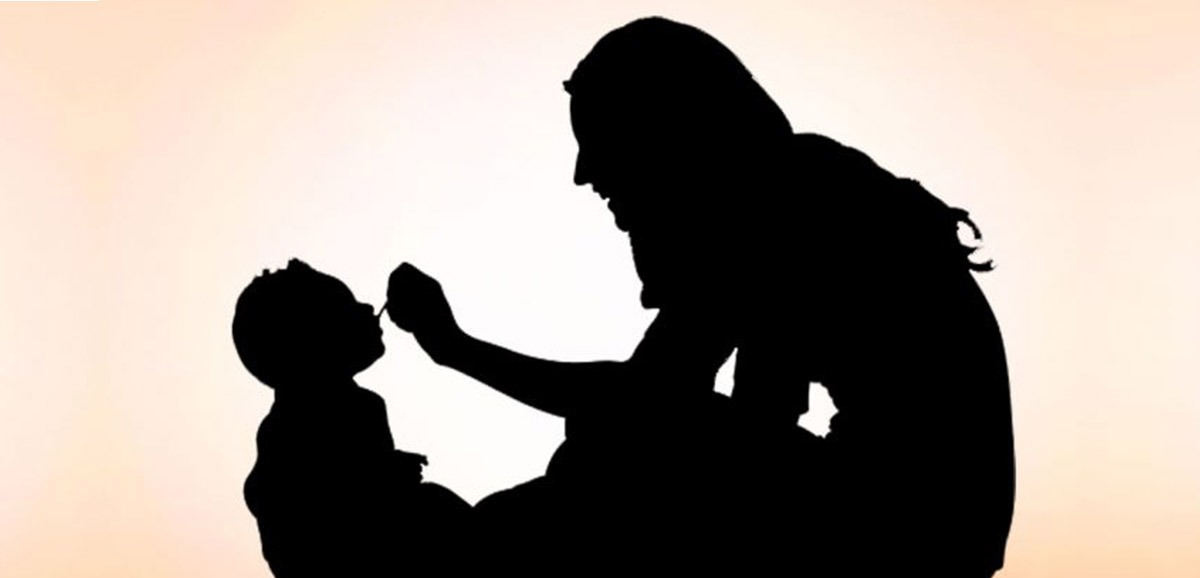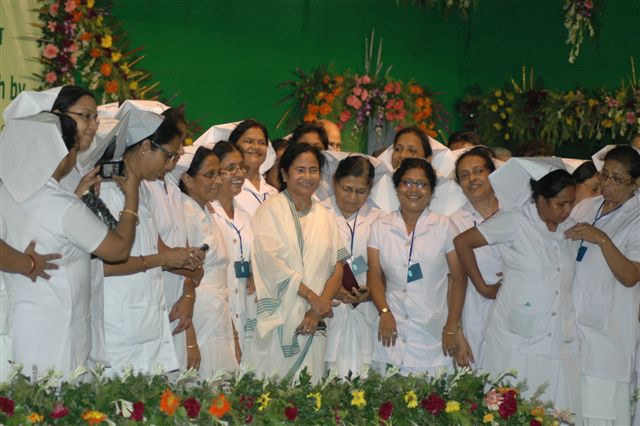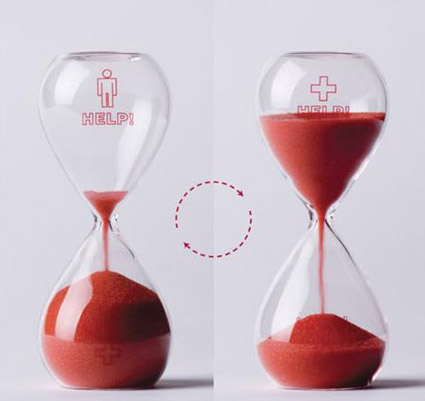The Bengal Government has, over the last few years, immensely improved on the various public health care delivery initiatives. The major achievements till financial year 2017-18 are listed below.
Achievements
National Vector-Borne Disease Control Programme (NVBDCP): The Health and Family Welfare Department has undertaken a Joint Action Plan (JAP) to prevent vector-borne diseases like malaria, dengue, chikungunya, Japanese encephalitis, lymphatic filariasis and visceral leishmaniasis (kala-azar). The JAP is made up of a State Nodal Monitoring Committee (SNMC), District-Level Monitoring Teams (DLMT) and six-member vector control teams in all wards of all municipalities.
The State Nodal Monitoring Committee on Vector-Borne Diseases has been formed with senior officials from six departments, including Health and Family Welfare, and the municipal corporation commissioners of Kolkata, Howrah and Bidhannagar.
The DLMTs and ward-based vector control teams work as per guidelines devised by the respective District Vector-Borne Disease Control Plan (DVBDCP), conducting house-to-house surveillance and taking other vector-control measures.
Revised National Tuberculosis Control Programme (RNTCP): As part of RNTCP, all tuberculosis (TB) patients are administered daily fixed-dose combination (FDC) anti-TB drugs at Government health centres. The State Government is planning the administration of these drugs by registered private practitioners too.
Case-finding is being actively implemented among high-risk populations like slum dwellers, correctional homes, migrant workers, tea garden workers, among others, in Kolkata and seven other health districts (Birbhum, Jalpaiguri, Murshidabad, North 24 Parganas, Purba Medinipur, Purulia, South 24 Parganas).
National Leprosy Eradication Plan (NLEP): The main thrust of the National Leprosy Eradication Plan has been on active case search. The number of new leprosy cases, as detected through the Leprosy Case Detection Campaign (LCDC), has reduced year-on-year to financial year (FY) 2017-18 by about 3,000. Significantly, the number of grade-II cases has declined too in 2017, indicating the success of the method of early case detection and medication.
The next targets for NLEP in Bengal, as taken by the State Government, are elimination of leprosy in all the districts (i.e. prevalence of less than 1 case in a population of 10,000) and reduction in grade-II disability among new cases (i.e. less than 1 per million of population and 0 among children)
Sustained efforts have considerably reduced the level of stigma associated with leprosy.
National Thalassaemia Control Programme (NTCP): National Thalassaemia Control Programme has had significant success in Bengal. From FY 2016-17 to 2017-18, the number of carriers detected has reduced by 11,723 and that of thalassaemia patients by 1,030.
There are 25 Thalassaemia Control Units (TCU) operating across the State, whose day-to-day activities are monitored by the Institute of Haematology and Transfusion Medicine (IHTM), Medical College, Kolkata and NRS Medical College. Two more TCUs will be opened at Raiganj District Hospital and Alipurduar District Hospital.
National Mental Health Programme (NMHP): District Mental Health Programme (DMHP) is being implemented in seven health districts, namely, Bankura, Cooch Behar, Jalpaiguri, Nadia, North 24 Parganas, Paschim Medinipur, South 24 Parganas, and, as a part of this, 40,000 patients have been treated in 1,020 outreach camps.
The Institute of Psychiatry, Kolkata, has been declared as a centre of excellence by the Central Government.
National Programme for Prevention and Control of Cancer, Diabetes, Cardiovascular Diseases and Stroke (NPCDCS): NPCDCS is now running in 19 health districts and will be functional in the remaining seven by April 2018. Under this programme, eight Critical Care Units (CCU) are operating in eight health districts. The State Government has decided to administer follow-up chemotherapy at district-level hospitals and is training doctors and nurses for the purpose.
National Programme for Health Care of the Elderly (NPHCE): NPHCE is running in 14 health districts – Bankura, Birbhum, Cooch Behar, Darjeeling, Dakshin Dinajpur, Hooghly, Howrah, Jalpaiguri, North 24 Parganas, Paschim Medinipur, Purba Bardhaman, Purba Medinipur, Purulia, South 24 Parganas – under which physical and mental support through specialist doctors and health personnel, and special drugs and necessary investigations, are provided for geriatric problems.
National Programme for Palliative Care (NPPC): NPPC is now being implemented in 19 health districts – Alipurduar, Bankura, Birbhum, Cooch Behar, Dakshin Dinajpur, Darjeeling, Hooghly, Howrah, Jalpaiguri, Malda, Murshidabad, Nadia, North 24 Parganas, Paschim Medinipur, Purba Bardhaman, Purulia, South 24 Parganas, Uttar Dinajpur. Training programme for opening District Palliative Care Centres (DPCC) at district hospitals was completed in December 2017.
Population-based screening: For early detection of diabetes, hypertension, and three common cancers – oral, breast, cervical – the Health Department has undertaken population-based screening of all persons above 30 years in three health districts (Alipurduar, Asansol, Birbhum) and two municipal corporations (Asansol, Howrah). As a part of this, the Training of Trainers (TOT) programme (i.e. district officials as trainers) has been completed, and training of Accredited Social Health Activists (ASHA) and Auxiliary Nurse Midwives (ANM) will start soon.
Blood safety: Both the whole blood collected by the 74 functional blood banks of the State Government and the percentage of separation of blood components by the 13 Blood Component Separation Units (BCSU) have increased significantly. Twenty-five more BCSUs are at various stages of planning, with at least one in each district hospital.
HIV/AIDS Prevention and Control Programme: During the first six months of financial year (FY) 2017-18, Bengal has achieved 95 per cent screening of pregnant women for HIV, an important milestone towards achieving the ‘Elimination of Paediatric HIV’ by 2020. The Government has introduced HIV screening at Sick Newborn Care Units (SNCU), Nutrition Rehabilitation Centres (NRC), Urban Primary Health Centres (UPHC) and maternity homes.
During FY 2017-18, the State Government has adopted a ‘Test and Treat’ policy, by which all HIV-infected individuals are offered free anti-retroviral treatment (ART), irrespective of their CD4 count (a serological measure that indicates the immunity level in an HIV-infected person).
For the benefit of people living with HIV, the State Government has introduced free travel passes for people living with HIV (PLHIV) and one companion in Government buses. PLHIVs also get the benefits of Khadya Sathi, Gitanjali and financial assistance from ART centres.
The State Government is committed to achieving zero infection from HIV, zero deaths due to HIV and complete elimination of stigma and discrimination for PLHIVs.
Food safety: As a result of concerted efforts towards streamlining the licensing and registration of food business operations and making it online, there has been a 27 per cent increase in the licensing and registration of food business operators (FBO). Consequently, the revenue collection has also improved during FY 2017-18. A total of 1,31,442 FBOs are registered in Bengal under Food Safety and Standards Authority of India (FSSAI).
The microbiology lab under West Bengal Public Health Laboratory, located on Convent Road in Kolkata and run by the Health & Family Welfare Department, has been upgraded.
Public grievance redressal: The Department has improved the public grievance redressal system with respect to the delivery of health schemes and other issues through the introduction of Web-based West Bengal Health Scheme Monitoring System and a 24×7 helpline.
জনস্বাস্থ্য ক্ষেত্রে ব্যাপক কর্মযজ্ঞ বাংলায়
বর্তমানের রাজ্য সরকার গত কয়েক বছরে রাজ্যের জন স্বাস্থ্যের ব্যাপারে নিয়েছে অনেক উদ্যোগ। ২০১৭-১৮ সাল পর্যন্ত দেখে নেওয়া যাক কি কি সাফল্য এসেছে এই উদ্যোগের ফলেঃ-
ন্যাশানাল ভেক্টর-বর্ন ডিসিস কন্ট্রোল প্রোগ্রাম –রাজ্যের স্বাস্থ্য ও পরিবার কল্যাণ দপ্তর একটি যৌথ কর্মসূচী নিয়েছে ভেক্টর-বর্ন ডিসিসেস যেমন ম্যালেরিয়া, ডেঙ্গু, চিকুনগুনিয়া, জাপানিজ এঙ্কেফেলাইটিস, লিম্ফ্যাটিক ফাইলারিয়াসিস ও কালা জ্বরের মত রোগ দমনের। এই যৌথ কর্মসূচীতে যারা থাকবে, তাদের মধ্যে বিশেষভাবে উল্লেখযোগ্য হল, স্টেট নোডাল মনিটারিং কমিটি, জেলা স্তরের মনিটারিং কমিটি এবং সকল পুরসভার সবকটি ওয়ার্ডে ছয় সদস্যের ভেক্টর কন্ট্রোল টিম।
ভেক্টর-বর্ন ডিসিস দমনের জন্য তৈরী স্টেট নোডাল মনিটারিং কমিটি তৈরী হয়েছে ছয় দপ্তরের উচ্চাধিকারিকদের নিয়ে। যেমন, স্বাস্থ্য ও কল্যাণ দপ্তর, কলকাতা, হাওড়া ও বিধান নগর পুরসভার কমিশনারদের নিয়ে।
জেলা স্তরের মনিটারিং কমিটি এবং ভেক্টর কন্ট্রোল টিম কাজ করবে নির্দিষ্ট জেলার ভেক্টর-বর্ন ডিসিস কন্ট্রোল পরিকল্পনা অনুসারে।এই পরিকল্পনা তৈরী হয় ভেক্টর কন্ট্রোলের জন্য বাড়ি বাড়ি ঘুরে অনুসন্ধান করে।
রিভাইসড ন্যাশানাল টিউবারকুলোসিস কন্ট্রোল প্রোগ্রাম –রিভাইসড ন্যাশানাল টিউবারকুলোসিস কন্ট্রোল প্রোগ্রামের অংশ হিসেবে সমস্ত টিউবারকুলোসিস রোগীদের রোজ নির্দিষ্ট মাপের টিবি নিরাময়ের ওষুধ দেওয়া হয় সরকারি হাসপাতালে। রাজ্য সরকার পরিকল্পনা নিয়েছে এই ওষুধগুলি নিয়ন্ত্রণ করবে রেজিস্টার করা বিশেষজ্ঞরা।
বস্তি, সংশোধনাগার, ভিনদেশী মজুর, চা বাগান শ্রমিক যাদের মধ্যে এই রোগের সম্ভবনা বেশী, তাদের মধ্যে কেস ফাইন্ডিং কার্যকর করা হয়েছে। এই স্থানগুলি হল, কলকাতা ও অন্য সাতটি স্বাস্থ্য-জেলা – বীরভূম, জলপাইগুড়ি, মুর্শিদাবাদ, উত্তর ২৪ পরগনা, পূর্ব মেদিনীপুর, পুরুলিয়া ও দক্ষিণ ২৪ পরগনা।
ন্যাশানাল লেপ্রসি ইরাডিকেশন প্ল্যান –ন্যাশানাল লেপ্রসি ইরাডিকেশন প্ল্যান জোর দিয়েছে আক্টিভ কেস সার্চের ওপর। লেপ্রসি কেস ডিটেকশন ক্যাম্পেনের মাধ্যমে নতুন কুষ্ঠ রোগীর সংখ্যা প্রতি বছর কমে চলেছে। ২০১৭-১৮ সালে এসে দাঁড়িয়েছে ৩০০০ এ। গ্রেড-দুই রোগীর সংখ্যাও উল্লেখযোগ্য ভাবে কমেছে ২০১৭ সালে। স্থায়ী প্রচেষ্টার ফলে কুষ্ঠরোগের সঙ্গে জড়িত বৈষম্যমূলক আচরণ অনেকটাই দূর করা গেছে।
রাজ্য সরকার বাংলায় ন্যাশানাল লেপ্রসি ইরাডিকেশন প্ল্যানের যে নতুন লক্ষ্য স্থির করেছে, তা হল, সকল জেলা থেকে কুষ্ঠ রোগের নিরাময় (প্রতি ১০০০০ মানুষের মধ্যে ১ জন বা তার কম রোগী) এবং গ্রেড–দুই তেও নতুন আক্রান্তের সংখ্যা কমানো (প্রতি ১০০০০০০ মানুষে ১ জনেরও কম আক্রান্ত এবং শিশুদের মধ্যে এক জনও আক্রান্ত নয়)।
এছাড়া, এই রোগের সঙ্গে জড়িত সমস্ত আতঙ্ক বা অমূলক চিন্তাও মানুষের মধ্যে কমেছে।
ন্যাশানাল থ্যালাসেমিয়া কন্ট্রোল প্রোগ্রাম –ন্যাশানাল থ্যালাসেমিয়া কন্ট্রোল প্রোগ্রাম ব্যাপক সাফল্য পেয়েছে বাংলায়। ২০১৬-১৭ সাল থেকে ২০১৭-১৮ সালের মধ্যে এই রোগের কেরিয়ারের সংখ্যা কমেছে ১১৭২৩ এবং রোগীর সংখ্যা কমেছে ১০৩০।
এই মুহূর্তে ২৫টি থ্যালাসেমিয়া কন্ট্রোল ইউনিট রাজ্যে কাজ করছে যার প্রতিদিনের কাজ খতিয়ে দেখে এনআরএস মেডিক্যাল কলেজ ও কলকাতার মেডিক্যাল কলেজের ইন্সটিটিউট অফ হেমাটোলজি অ্যান্ড ট্রান্সফিউশন মেডিসিন।
আরও দুটি থ্যালাসেমিয়া কন্ট্রোল ইউনিট খোলা হবে রায়গঞ্জ জেলা হাসপাতাল ও আলিপুরদুয়ার জেলা হাসপাতালে।
ন্যাশানাল মেন্টাল হেলথ প্রোগ্রাম –সাতটি স্বাস্থ্য জেলা বাঁকুড়া, কোচবিহার, জলপাইগুড়ি, নদীয়া, উত্তর ২৪ পরগনা, পশ্চিম মেদিনীপুর, দক্ষিণ ২৪ পরগনায় ন্যাশানাল মেন্টাল হেলথ প্রোগ্রাম চালু করা হয়েছে। এখানে ১০২০ টি ক্যাম্পে ৪০০০০ রোগীর চিকিৎসা করা হয়েছে।
কলকাতার ইন্সটিটিউট অফ সাইকিয়াট্রি কে সেন্টার অফ এক্সেলেন্স ঘোষণা করেছে কেন্দ্রীয় সরকার।
ন্যাশানাল প্রোগ্রাম ফর প্রিভেনশন অ্যান্ড কন্ট্রোল অফ ক্যান্সার, ডায়াবিটিস,কার্ডিয়ভাস্কুলার ডিসিসেস অ্যান্ড স্ট্রোক –এই মুহূর্তে রাজ্যের ১৯টি স্বাস্থ্য জেলায় ন্যাশানাল প্রোগ্রাম ফর প্রিভেনশন অ্যান্ড কন্ট্রোল অফ ক্যান্সার, ডায়াবিটিস, কার্ডিয়ভাস্কুলার ডিসিসেস অ্যান্ড স্ট্রোক চালু ছিল এবং এপ্রিল মাস থেকে বাকি সাতটি স্বাস্থ্য জেলায়ও চালু হয়েছে। এই কর্মসূচীর অধীনে আটটি স্বাস্থ্য জেলায় আটটি ক্রিটিকাল কেয়ার ইউনিট চালু আছে। রাজ্য সরকার সিদ্ধান্ত নিয়েছে জেলা স্তরের হাসপাতালগুলিতে কেমো চিকিৎসা চালানো, এ জন্যও ডাক্তার ও নার্সদের প্রশিক্ষণ দেওয়া হচ্ছে।
ন্যাশানাল প্রোগ্রাম ফর হেলথ কেয়ার অফ দি এল্ডারলি –রাজ্যের ১৪টি স্বাস্থ্য জেলায় ন্যাশানাল প্রোগ্রাম ফর হেলথ কেয়ার অফ দি এল্ডারলি চালু আছে। জেলাগুলি হল, বাঁকুড়া, বীরভূম, কোচবিহার, দার্জিলিং, দক্ষিণ দিনাজপুর, হুগলী, হাওড়া, জলপাইগুড়ি, উত্তর ২৪ পরগনা, পশ্চিম মেদিনীপুর, পূর্ব বর্ধমান, পূর্ব মেদিনীপুর, পুরুলিয়া ও দক্ষিণ ২৪ পরগনা। এখানে বয়স্কদের শারীরিক ও মানসিক ভরসা প্রদান করেন বিশেষজ্ঞ ডাক্তার ও স্বাস্থ্য আধিকারিকরা। বিশেষ ওষুধ এবং প্রয়োজনীয় অনুসন্ধান করা হয় বার্ধক্যজনিত রোগের জন্য।
ন্যাশানাল প্রোগ্রাম ফর প্যালিয়েটিভ কেয়ার –আপাতত ১৯টি স্বাস্থ্য জেলায় ন্যাশানাল প্রোগ্রাম ফর প্যালিয়েটিভ কেয়ার চালু করা হয়েছে। জেলাগুলি হল, আলিপুরদুয়ার, বাঁকুড়া, বীরভূম, কোচবিহার, দক্ষিণ দিনাজপুর, দার্জিলিং, হুগলী, হাওড়া, জলপাইগুড়ি, মালদা, মুর্শিদাবাদ, নদীয়া, উত্তর ২৪ পরগনা, পশ্চিম মেদিনীপুর, পূর্ব বর্ধমান, পুরুলিয়া, দক্ষিণ ২৪ পরগনা, উত্তর দিনাজপুর। গত বছরের ডিসেম্বর মাসেই জেলা হাসপাতালগুলিতে ডিস্ট্রিক্ট প্যালিয়েটিভ কেয়ার ইউনিট খোলার প্রশিক্ষণ দেওয়া সম্পূর্ণ হয়েছে।
পপুলেশন-বেসড স্ক্রিনিং –তিনটি স্বাস্থ্য জেলা (আলিপুরদুয়ার, আসানসোল, বীরভূম) ও দুটি পুরসভায় (আসানসোল ও হাওড়া) ৩০ বছরের বেশী মানুষদের মধ্যে প্রাথমিক পর্যায়ে ডায়াবিটিস, হাইপারটেনশন, এবং তিন ধরনের ক্যান্সারের (ওরাল, ব্রেস্ট ও সার্ভিকাল) নির্ণয় করার জন্য পপুলেশন-বেসড স্ক্রিনিং চালু করেছে। এই কর্মসূচীর অন্তর্গত ট্রেনিং অফ ট্রেনার্স কর্মসূচী (জেলা আধিকারিকরা ট্রেনিং দেবেন) সম্পন্ন হয়েছে। ট্রেনিং অফ অ্যাক্রেডিটেড সোশ্যাল হেলথ অ্যাকটিভিস্টস ও অক্সিলারি নার্স মিডওয়াইভস শীঘ্রই চালু হবে।
ব্লাড সেফটি –রাজ্য সরকারের ৭৪টি ব্লাড ব্যাঙ্কের মাধ্যমে সংগৃহীত রক্ত ও ১৩টি রক্ত পৃথকীকরণ কেন্দ্রের মাধ্যমে পৃথকীকৃত রক্তের শতাংশ বেড়েছে উল্লেখযোগ্য ভাবে। আরও ২৫টি রক্ত পৃথকীকরণ কেন্দ্র তৈরীর পরিকল্পনা করা হয়েছে, যেখানে প্রতি জেলা হাসপাতালে অন্তত একটি করে কেন্দ্র থাকবে।
এইচআইভি/এইডস প্রিভেনশন অ্যান্ড কন্ট্রোল প্রোগ্রাম –২০১৭-১৮ অর্থবর্ষের প্রথম ছয় মাসে রাজ্য ৯৫ শতাংশ প্রসূতি মহিলাদের মধ্যে এইচআইভি নির্ণয়ের কাজ করে ফেলেছে। এটি খুব উল্লেখযোগ্য ২০২০ সালের মধ্যে ‘এলিমিনেশান অফ পেডিয়াট্রিক এইচআইভি’র লক্ষ্যে। রাজ্য সরকার সিক নিউবর্ন কেয়ার ইউনিট, নিউট্রিশান রিহ্যাবিলিটেশন সেন্টার, আর্বান প্রাইমারি হেলথ সেন্টার ও ম্যাটারনিটি হোমগুলিতে এইচআইভি স্ক্রিনিঙের ব্যবস্থা করেছে।
২০১৭-১৮ অর্থবর্ষে রাজ্য সরকার একটি নীতি গ্রহণ করেছে ‘টেস্ট অ্যান্ড ট্রিট’। এর মানে সমস্ত এইচআইভি আক্রান্ত ব্যাক্তিদের তাদের সিডি৪ কাউন্ট বিচার না করে বিনামূল্যে অ্যান্টি-রেট্রোভাইরাল ট্রিটমেন্ট দেওয়া হবে।
এইচআইভি আক্রান্তদের সুবিধার্থে রাজ্য সরকার বিনামূল্যে ট্রাভেল পাস চালু করেছে। এই পাসের মাধ্যমে এইচআইভি আক্রান্ত ব্যাক্তি ও তার কোনও সঙ্গী বিনামূল্যে সরকারি ব্যাসে যাতায়াত করতে পারবেন। এছাড়াও আক্রান্তেরা খাদ্য সাথী, গীতাঞ্জলী, অ্যান্টি-রেট্রোভাইরাল ট্রিটমেন্ট কেন্দ্র থেকে আর্থিক সহায়তা পাবে।
রাজ্য সরকার এইচআইভি সংক্রমণ নির্মূল করতে চায়, এইচআইভি আক্রান্ত হয়ে মৃত্যুর সংখ্যাও শূন্য করতে চায়, এবং এই আক্রান্তরা যেন কোনও ভাবে দুর্ব্যবহার বা কুসংস্কারের বলি না হয়, তাও নিশ্চিন্ত করতে চায়।
খাদ্য সুরক্ষা –খাদ্য সংক্রান্ত ব্যবসার (FBO) লাইসেন্স ও রেজিস্ট্রেশন পদ্ধতি সংস্কার ও অনলাইন পদ্ধতি চালু করার ফলে এই সব ব্যবসার লাইসেন্স ও রেজিস্ট্রেশনের সংখ্যা ২৭ শতাংশ বেড়েছে। এর দরুণ ২০১৭-১৮ সালে রাজস্ব আদায়ও বেড়েছে। রাজ্যে ফুড সেফটি অ্যান্ড স্ট্যান্ডার্ডস অথরিটি অফ ইন্ডিয়া-এর আওতায় ১,৩১,৪৪২ টি FBO নথিভুক্ত হয়েছে।
কলকাতায় অবস্থিত পশ্চিমবঙ্গ জনস্বাস্থ্য পরীক্ষাগারের (ওয়েস্ট বেঙ্গল পাবলিক হেলথ ল্যাবোরেটরি) অন্তর্গত মাইক্রোবায়োলজি গবেষণাগারটির উন্নতিকরণ হয়েছে।
জন অভিযোগ নিরসন –রাজ্যে রোগী ও তাদের পরিবারের অভিযোগ নিরসন ব্যবস্থার উন্নতি হয়েছে। রাজ্য স্বাস্থ্য ও পরিবার কল্যাণ দপ্তর একটি ২৪X৭ হেল্প লাইন চালু করেছে। তার সাথে চালু হয়েছে একটি অনলাইন ওয়েস্ট বেঙ্গল হেলথ স্কিম মনিটারিং সিস্টেম।










